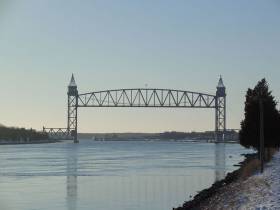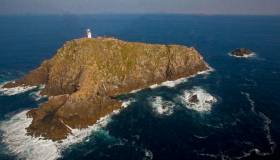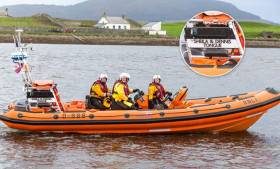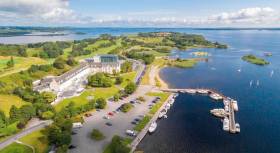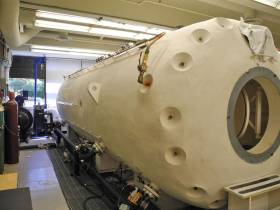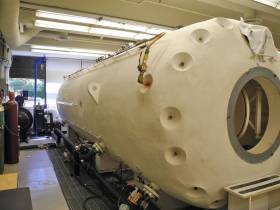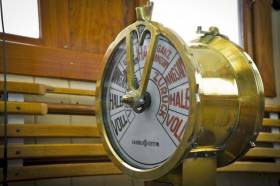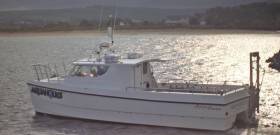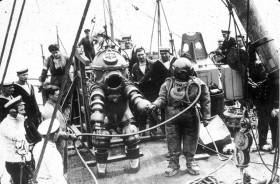Displaying items by tag: diving
Probe Into Irish Boy’s Death In US Boat Capsize
RTÉ News reports that an investigation has begun into the death of an Irish boy in a boating incident in the United States last week.
Harry O’Connor, 8, died on Saturday (29 July) three days after he was involved in a boat capsize in the Cape Cod Canal near Boston.
According to TheJournal.ie, the boy — who was on a day trip with his parents — was trapped under the capsized vessel for more than 20 minutes.
O’Connor had moved to Boston with his family from Clonmel and also had ties to Duleek in Co Meath, where his funeral will take place this Thursday (3 August).
In other news, a post-mortem was set to take place yesterday (Monday 31 July) after a 57-year-old man died in a diving accident off Donegal last Friday (28 July)
John Alwright’s oxygen mask was dislodged after he was swept into a cave by an underwater current, as Independent.ie reportss Independent.ie reports.
Despite the best efforts of his diving companions, Alwright was unresponsive when he came to the surface.
#Rescue116 - More than 100 divers have joined a major search since early this morning (Saturday 22 April) for Paul Ormsby and Ciaran Smith, the two Irish Coast Guard crew members still missing after the Rescue 116 tragedy over a month ago.
According to The Irish Times, an exclusion zone around the wreck site at Black Rock off Co Mayo has been lifted for the search, thought to be the largest ever co-ordinated dive in the history of the State.
Naval Service and Garda divers are joined by specialists in sub-sea search and recovery in combing the sea bed of at the western and south-western parts of the island, following the completion of a ‘360-degree’ terrain survey by the Army and Garda crime scene examiners.
The Irish Times has much more on the story HERE.
Divers Rescued Off Sligo In Heavy Seas
#Rescue - The Irish Times reports on the rescue of eight divers off the Sligo coast after a boat capsized this morning (Sunday 19 March).
Sligo Bay RNLI were tasked to the scene off Aughris Pier in Sligo town after the incident during a diving excursion, rescuing seven from a heavy swell.
An eighth person was subsequently recovered from the water and airlifted to Sligo Hospital by the Irish Coast Guard helicopter Rescue 118, which was diverted from the ongoing search for the missing crew of Rescue 116.
Independent.ie reports that the latter diver was in serious condition, and that a second diver was later hospitalised.
#Lusitania - Questions have been raised by an Oireactas committee after a telegraph from the Lusitania wreck was lost during an unsupervised dive last summer.
According to RTÉ News, no archaeologist was present on the diving expedition on 13 July 2016 during which the telegraph sank to the ocean floor from a burst lift bag.
The committee heard from Terry Allen of the National Monuments Service that the incident would have occurred even with supervision by an archaeologist.
But committee chair Peadar Tóibín said Heritage Minister Heather Humphreys has “questions to answer” as the decision to allow the dive to one of Ireland’s most important wreck sites unsupervised was itself a “significant break” from protocol.
A subsequent dive led by Eoin McGarry on behalf of the Lusitania’s owner Gregg Bemis recovered a separate telegraph machine from its bridge, as previously reported on Afloat.ie.
Speakers Announced For Dive Ireland 2017
#Diving - A number of main stage speakers have been announced for Dive Ireland 2017 at Athlone’s Hodson Bay Hotel from 4-5 March.
Marine salvage specialist Brian McAllister will talk the challenges of raising the Costa Concordia off the coast of Italy, a pioneering effort that involved the greatest minds and hands in the industry.
Renowned wreck diver Barry McGill discusses the struggle to control pivotal shipping waters in the North Atlantic off the Irish coast during the First World War by the use of U-boats and mines.
On a similar war theme, Irish-born but France-based diver and photographer Catherine Connors surveys the remains of the Second World War’s Operation Overlord, better known at the D-Day landings.
Closer to home, Tosh Lavery gives a brief history of the Garda Underwater Unit and its work on missing person and murder cases alike.
The Dive Ireland International Expo is the event of the year for all underwater enthusiasts, featuring two days of talks, trading and networking on Lough Ree that also includes the AGM of the Irish Underwater Council (CFT) on Sunday 5 March.
More details are available from DiveIreland.ie
Galway Earmarked For Hyperbaric Therapy Centre
#Diving - Planning permission is being sought for a new hyperbaric therapy centre in Galway city centre, as Galway Bay FM reports.
Regularly used for the treatment of damaged body tissues, hyperbaric facilities are also key to the treatment of decompression sickness, or ‘the bends’ – a risk for deepwater divers.
Last November, Cork’s SCUBA diving community announced plans to raise funds for a local hyperbaric chamber, as previously reported on Afloat.ie.
Cork Diving Community Fundraising For Hyperbaric Chamber
#Diving - The SCUBA diving community in Cork is raising funds for a hyperbaric chamber to treat divers with decompression sickness, as the Irish Examiner reports.
Otherwise known as ‘the bends’, the potentially fatal condition is contracted when nitrogen bubbles form in the bloodstream of divers who surface from deep dives too quickly.
However, there is only one hyperbaric chamber required for the necessary oxygen therapy that caters for diving emergencies in the Republic, located in Galway.
That’s prompted the creation of the Munster Hyperbaric Chamber Project, to provide emergency facilities for affected divers in Ireland’s south-west in time for the 2017 diving season. The Irish Examiner has more HERE.
In other diving news, two English SCUBA clubs have shared a top award for their expedition to Ratlin Island off the Causeway Coast, according to the Bury Times.
Divers from Bury and Wigan in the greater Manchester area were awarded the Expedition Trophy at the British Sub-Aqua Club Diving Conference recently for their reef and shipwreck dives out of Ballycastle — including one visit to a cruiser torpedoed during the First World War.
Diver Recovers Telegraph Machine From Lusitania Wreck
#Lusitania - A Dungarvan diver has recovered a telegraph machine from the wreck of the Lusitania off West Cork, as The Irish Times reports.
Eoin McGarry retrieved the treasure trove under licence from the Heritage Minister and on behalf of the wreck’s owner, multi-millionaire US businessman Gregg Bemis, who hopes to restore it for display locally.
The find completes a diving operation that began this past summer with the retrieval of part of the bridge telegraph — which Bemis and McGarry plan to return for in the new year.
Last month marked 81 years since the discovery of the Lusitania wreck site off the Old Head of Kindle, as previously reported on Afloat.ie.
Causeway Coast Diving Firm Splashes Out On New Boat To Boost Business
#Diving - A new commercial catamaran is part of a Portstewart-based diving firm’s efforts to compete with popular dive tourism destinations abroad, as the News Letter reports.
Diving is ‘big business’ for the Aquaholics Dive Centre, which provides services for big-name film and TV productions such as Game of Thrones alongside its training, sea safari and diving holiday offerings.
And it’s the tourism that such visibility brings to Northern Ireland that the company aims to capture, with its new boat just the ticket to explore more of the Causeway Coast’s impressive diving sites.
The News Letter has more on the story HERE.
81 Years Since First Incredible Dive To Lusitania Wreck
#Lusitania - Yesterday (Thursday 6 October) marked 81 years since the discovery of the wreck of the Lusitania off the Old Head of Kinsale, more than 20 years after the ocean liner was lost.
And less than three weeks from now will mark the 81st anniversary of the first brave diving expedition to the wreck site, according to Coast Monkey.
A far cry from the SCUBA gear and technology used by modern-day divers, Jim Jarrett made his descent in an enormous Tritonia diving suit.
The JS Peress design resembles something out of the sci-fi movies that would come out of Hollywood decades later.
But it was necessary to enable Jarrett to withstand the incredible pressures at the wreck site some 93 metres below the surface.
Coast Monkey has more on this remarkable story HERE.


























